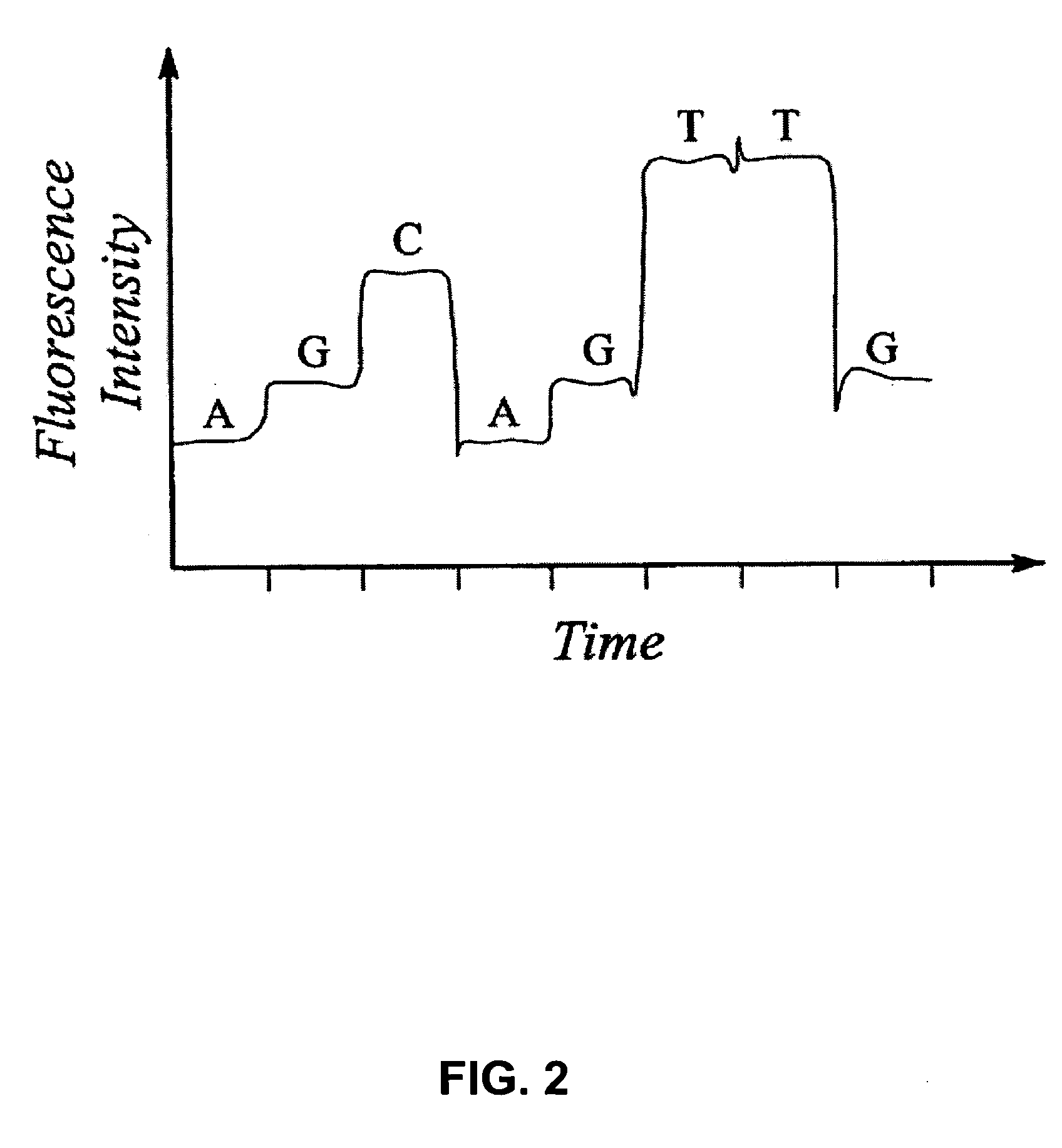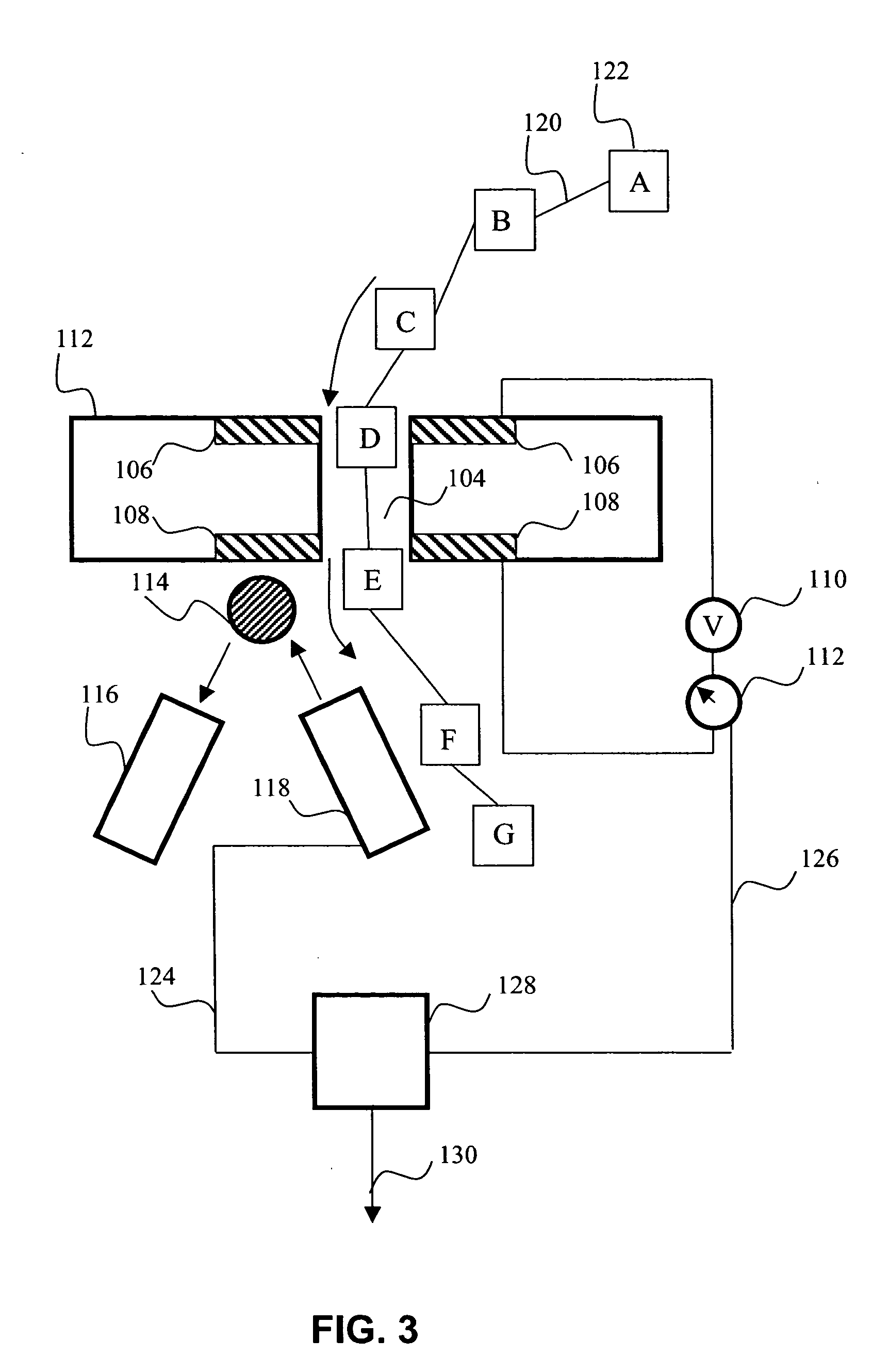Characterization of biopolymers by resonance tunneling and fluorescence quenching
a biopolymer and tunneling technology, applied in the field of resonance tunneling and fluorescence quenching characterization of biopolymer, can solve the problems of difficult or impossible to obtain information on the individual monomers of the biopolymer, unrealized hope, and difficult to expect this simple tunneling configuration to provide the specificity required for biopolymer sequencing
- Summary
- Abstract
- Description
- Claims
- Application Information
AI Technical Summary
Problems solved by technology
Method used
Image
Examples
example 1
[0101] The device can be fabricated using various techniques and materials. The nanopore can be made in a thin (500 nM) freestanding silicon nitride (SiN3) membrane supported on a silicon frame. Using a Focused Ion Beam (FIB) machine, a single initial pore of roughly 500 nM diameter can be created in the membrane. Then, illumination of the pore region with a beam of 3 KeV Argon ions sputters material and slowly closes the hole to the desired dimension of roughly 2 nM in diameter (See Li et al., “Ion beam sculpting at nanometer length scales”, Nature, 412: 166-169, 2001). Metal electrodes are formed by evaporation or other deposition means on the opposing surfaces of the SiN3 membrane. Wire bonding to the metal electrodes allows connection to the tunneling current bias and detection system. The bias is applied using an AC source with the modest requirement of roughly 3-5 volts at 30-50 MHz. The tunneling currents are expected to be in the nanoamp range, and can be measured using a co...
example 2
[0102] The model physical system to be analyzed is a one-dimensional quantum mechanical double-barrier structure shown in FIG. 7. The structure is analyzed by solving the time-independent Schrodinger equation for a fixed energy incident particle, and computing the transmission probability. The parameters used in the calculations are defined in FIG. 10.
A1. Double Barrier Solution
[0103] It is assumed that the particle total energy is greater than the potential energy in all regions except the barriers. Under this condition, the solutions to the Schrodinger equation in each of the five regions defined in FIG. 10 can be written down directly
Ψ1=A1eik1x+B1e−ik1x 1(A1)
Ψ2=A2e−k2x+B2ek2x 1(A2)
Ψ3=A3eik3x+B3e−ik3x 1(A3)
Ψ4=A4e−k4x+B4ek4x 1(A4)
Ψ5=A5eik5x+B5e−ik3x 1(A5)
where
{overscore (h)}k1,3,5=√{square root over (2μ(E−V1,3,5))} 1(A6)
{overscore (h)}k2,4=√{square root over (2μ(·V2,4−E))}. 1(A7)
[0104] The solution is determined by matching Ψ and dX / dx at the interfaces of all th...
PUM
| Property | Measurement | Unit |
|---|---|---|
| diameter | aaaaa | aaaaa |
| diameter | aaaaa | aaaaa |
| size | aaaaa | aaaaa |
Abstract
Description
Claims
Application Information
 Login to View More
Login to View More - R&D
- Intellectual Property
- Life Sciences
- Materials
- Tech Scout
- Unparalleled Data Quality
- Higher Quality Content
- 60% Fewer Hallucinations
Browse by: Latest US Patents, China's latest patents, Technical Efficacy Thesaurus, Application Domain, Technology Topic, Popular Technical Reports.
© 2025 PatSnap. All rights reserved.Legal|Privacy policy|Modern Slavery Act Transparency Statement|Sitemap|About US| Contact US: help@patsnap.com



